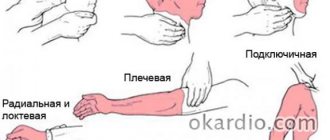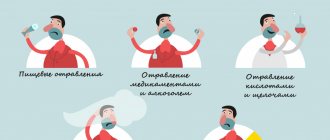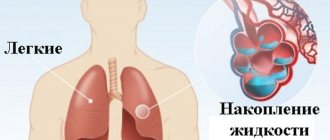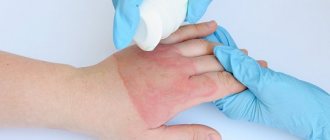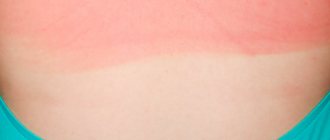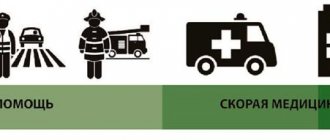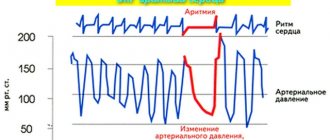Bradycardia
Bradycardia is a type of cardiac arrhythmia characterized by a slowing of the heart rate to 55 beats per minute or lower. It is the norm for athletes who systematically experience significant physical activity. In this case, we talk about physiological (functional) bradycardia. However, more often it is pathological in nature and serves as a symptom of heart disease. This condition is based on the inability of the sinus node to produce electrical impulses more than 60 times per minute, or to distribute them correctly along the conduction pathways.
Prevention
First of all, you need to be regularly monitored by a cardiologist in order to recognize the pathology in time. In addition, preventive measures include:
- control blood pressure and bring it to normal;
- maintaining adequate weight;
- regular physical activity appropriate for age;
- diet;
- choosing foods high in vitamins and minerals that are good for the heart;
- limiting smoking and alcohol;
- if possible, minimizing stressful situations;
- good sleep, rest and relaxation.
Bradycardia is a symptom that may indicate the presence of serious diseases. Under no circumstances should it be ignored. A timely visit to the doctor will help to avoid complications and begin appropriate treatment in time if necessary.
FIND OUT PRICES
Types of bradycardia and causes of its occurrence
According to its localization, pathological bradycardia of the heart can be:
- sinus. Appears due to a malfunction of the sinus node;
- caused by heart block. In this case, the sinus-atrial or atrioventricular conduction of impulses is disrupted.
Sinus bradycardia, depending on the causes that provoked it, is divided into the following forms:
- Organic. Appears as a result of any cardiac pathology: dystrophy or myocardial infarction, cardiosclerosis, myocarditis.
- Neurogenic (not associated with heart disease). This form can be caused by many factors: increased intracranial pressure, brain tumors and brain hemorrhages, various neuroses, vegetative-vascular dystonia, head bruises, wearing an excessively tightly tied tie or tight collar. Bradycardia is typical for patients with reduced thyroid function. Its cause may be a stomach or duodenal ulcer.
- Medicinal. This form is caused by taking certain medications, in particular, cardiac glycosides, morphine, β-blockers, calcium channel blockers, etc.
- Toxic. Develops with severe intoxication due to sepsis, typhoid fever, uremia, hepatitis. Toxic bradycardia is caused by poisoning with phosphorus compounds.
Sometimes the cause of the slow heart rate cannot be determined. This form is called idiopathic.
Cardiac bradycardia in a child or adolescent is usually caused by the same causes as in an adult. Such children require systematic monitoring by a cardiologist.
Women sometimes develop sinus bradycardia during pregnancy. This is a temporary condition that is not considered a pathology and goes away on its own after childbirth.
What triggers an attack?
If this is not the first time such a situation has arisen, and a person is aware of the characteristics of his body, he should try to protect himself from situations that can lead to a sharp deterioration in well-being. Main risk factors:
- Severe stress;
- Hunger;
- Intoxication, especially when drinking alcohol and smoking;
- Taking certain medications that can affect your heart rhythm. If possible, you should not resort to self-medication even for diseases that at first glance are not related to the cardiovascular system, without consulting a doctor;
- Vitamin deficiency, so the diet should be varied. If you already have a history of bradycardia, you should periodically take multivitamins, which your doctor will recommend;
- Clothes that are too tight or a scarf or tie that is pulled tight can restrict blood circulation;
- Severe hypothermia.
Fasting, including therapeutic fasting, can lead to a slowdown in heart rate and an attack of bradycardia. If you feel constant weakness, periodically experience tinnitus and dizziness, you need to get out of the fasting state. But you need to do this slowly, first by including liquid food in your diet.
Clinical picture
Mild bradycardia (45–55 beats per minute), which does not cause significant disturbances in the body, is usually not accompanied by clinical manifestations. Symptoms such as dizziness, weakness and fainting occur when the heart rate drops to 40 beats per minute.
In addition, when the heart rate slows down, you may experience:
- chronic fatigue;
- dyspnea;
- cold sweat;
- chest pain;
- blood pressure surges;
- problems with attention, thinking and memory;
- flashing “flies” before the eyes.
In severe cases, fainting and episodes of loss of consciousness are possible. The severity of bradycardia symptoms depends on the degree of circulatory disorder developing against its background.
Diagnostics
The main symptom of the pathology in question is a rare pulse. With sinus bradycardia, heart contractions have a regular rhythm. The sonority of heart sounds remains unchanged. Some patients experience irregular breathing.
To clarify the diagnosis, the doctor prescribes additional tests:
- ECG;
- ultrasound sonography of the heart;
- bicycle ergometry with load;
- transesophageal electrophysiological study of cardiac conduction tracts.
The latter method allows you to differentiate the functional and organic forms of heart rhythm disturbances.
Treatment of bradycardia
Physiological and mild types of pathology that do not cause much discomfort to the patient do not require therapy. If the decrease in heart rate is caused by medications, then dose adjustments or drug replacement are carried out. All other forms are eliminated with medication. The basis of treatment should be to eliminate the problem that caused the slow heart rate.
Symptoms associated with cerebral hypoxia are relieved by products containing belladonna (Bellaspon, Bellataminal, Besalol, Zelenin Drops), Eleutherococcus extract, ginseng root, and caffeine.
Drugs that can increase heart rate include:
- "Atropine sulfate";
- "Izadrin";
- "Normosecretol";
- "Orciprenaline sulfate";
- "Ephedrine hydrochloride."
Injection solutions and tablets for bradycardia are selected by the doctor, taking into account the clinical picture, contraindications, the patient’s age and concomitant diseases.
Diagnostic measures
The diagnosis of bradycardia is beyond doubt. In order to clarify the heart rate and the threat to life, electrotocography and cardiac ultrasound (EchoCG) are sufficient. If necessary, a number of clarifying studies are prescribed: a biochemical blood test, a general urine test, and a blood sugar test. Bradycardia can be suspected based on the results of auscultation, but this method alone is not enough.
First aid for an attack
If there is a person with bradycardia in the family, it is important for loved ones to understand how to help if an attack occurs. When the heart rate drops to critical values, the following measures are indicated:
- give strong black tea or coffee to drink;
- brew a strong decoction of belladonna or ginseng;
- help lie on your back, raise your head and legs;
- give a tablet of Nitroglycerin or Izadrina under the tongue.
If the patient has difficulty breathing, it is necessary to free the chest from clothing and provide a flow of fresh air into the room. If after 5–10 minutes there is no relief, the patient begins to complain of a burning sensation and pain behind the sternum, cold sweat covers the forehead, it is important to urgently call an ambulance. While the team is traveling, the patient is helped to collect documents and things for hospitalization.
Treatment tactics
Treatment of bradycardia is situational. The tactics are chosen based on examination data and the study of the patient’s life and clinical history. Initial and moderate degrees of bradycardia do not require drug correction in the absence of clinical manifestations. In case of persistent bradycardia, dynamic monitoring is indicated in order to promptly respond to deterioration of the condition.
Indications for starting corrective treatment are a slowdown in heart rate, hemodynamic disturbances, the development of angina pectoris, and the addition of typical manifestations of severe bradycardia with episodes of convulsions, loss of consciousness, and arrhythmia. The main drugs for stabilizing heart rate are those based on caffeine, ephedrine, and isoprenaline. Herbal preparations include eleutherococcus roots, ginseng, and belladonna infusion. If bradycardia is caused by intoxication, elimination of the provoking factor is indicated.
In severe cases, the patient is advised to have a pacemaker installed. Implantation of the device allows you to maintain an optimal level of heart rate, at which hemodynamics are stable. Surgical treatment is indicated only when there is a persistent decrease in heart rate, when there is a significant effect on hemodynamics, the patient’s quality of life worsens, and there is a real threat to life and health.
Prognosis and prevention
The prognosis for timely treatment and adequate monitoring of patients with bradycardia is favorable. The five-year survival rate reaches 95%. An unfavorable prognosis is made with organic damage to the heart and cardiac structures. Installation of a pacemaker significantly improves the quality of life of patients with bradycardia. Such patients require observation by a cardiologist, ECG and EchoCG at least once every 3 months, and when the condition is stabilized - at least 2 times a year.
Prevention of complications is aimed at relieving symptoms and improving the quality of life of patients. It is important to eliminate bad habits, especially smoking and drinking alcohol, and negative factors (harmful industries, unsatisfactory living conditions).
Be sure to avoid physical inactivity and go in for sports. Physical activity is unacceptable only in cases where bradycardia is caused by pathology and is incompatible with stress. In other cases, therapeutic exercises only improve the general condition. Patients are recommended to adjust their diet, sleep and rest patterns, and normalize their psycho-emotional background.
Complications
Moderate or mild cardiac bradycardia may not cause hemodynamic disturbances. However, a significant decrease in heart rate (up to 40 beats or less) leads to insufficient blood flow to vital organs and their oxygen starvation. As a result, serious damage to the brain, kidneys, liver, intestines, lungs and disruption of their normal functioning can occur.
The brain suffers the most from impaired contractile function of the heart muscle (myocardium) and insufficient blood supply. Its hypoxia causes convulsions or episodes of loss of consciousness lasting up to a minute. This is the most serious complication, since breathing may stop during an attack. In case of frequent loss of consciousness with a sharp drop in blood pressure, the issue of implanting a pacemaker is decided - a device that artificially generates electrical impulses with the required frequency.
In old age
Bradycardia after 60 years of age should be treated calmly if there are no other manifestations of heart muscle disease. It is believed that a moderate decrease in myocardial contractility occurs due to small foci of cardiosclerosis, a slowdown in metabolism, and a decrease in stimulating hormonal composition.
Sustained bradycardia does not interfere with yoga practice
Frequently asked questions about bradycardia
What medications can be taken for bradycardia?
If you begin to notice a slowing of your heartbeat, then rush to see a doctor to determine the cause. Medicines are prescribed depending on the origin and type of pathology. Do not try to stop a sudden attack of acute bradycardia on your own. Better call an ambulance.
What causes bradycardia?
There may be several reasons for a decrease in heart rate. The leading place among them is occupied by organic heart lesions. Disorders of the nervous system, diseases of the thyroid gland and stomach, and the use of certain drugs can also provoke a slowdown in heart rate. Sometimes bradycardia is accompanied by severe poisoning.
What to take if your heart rate is low?
For mild sinus bradycardia, it is enough to drink “Zelenin Drops” 2-3 times a day, 20-30 drops with water. If bradycardia is accompanied by painful symptoms and does not go away, then you cannot do without medical help.
